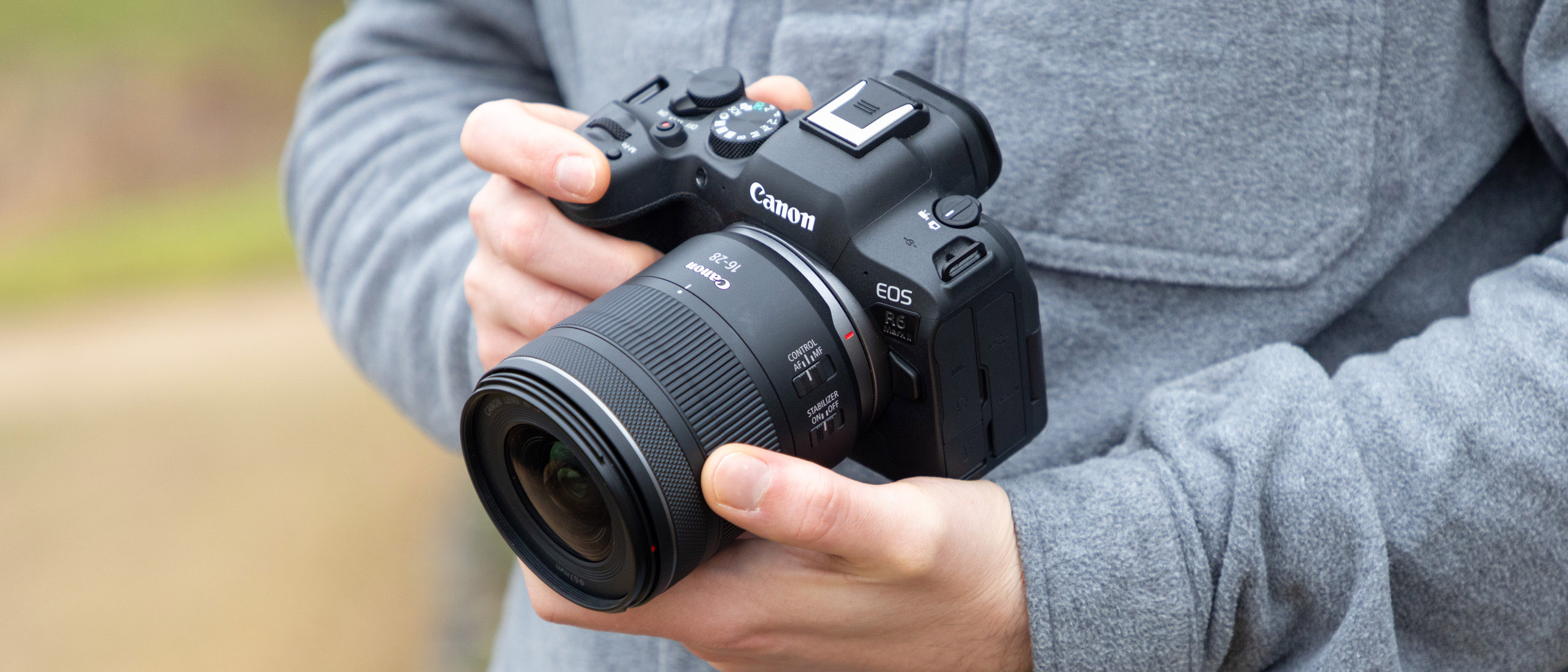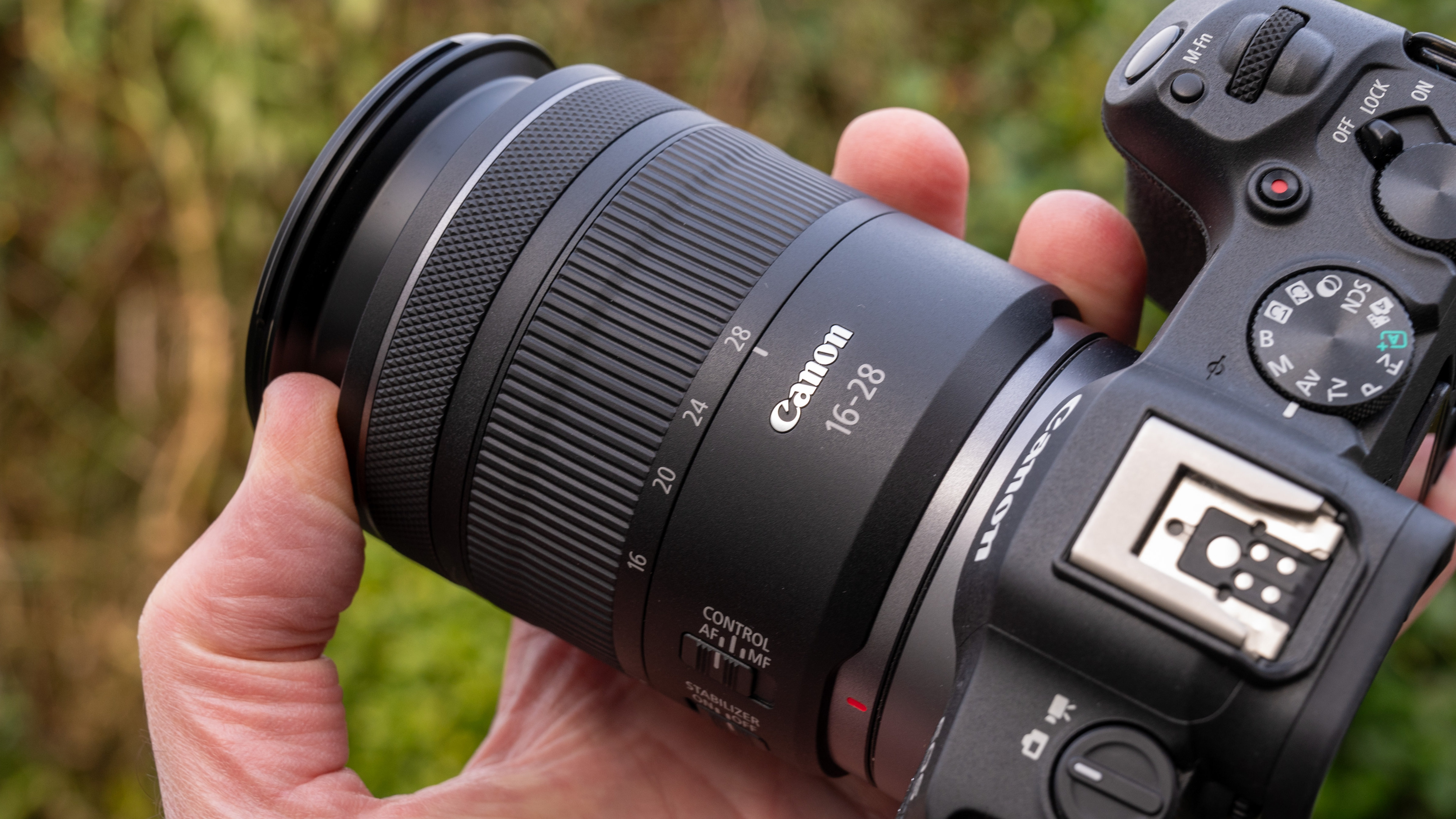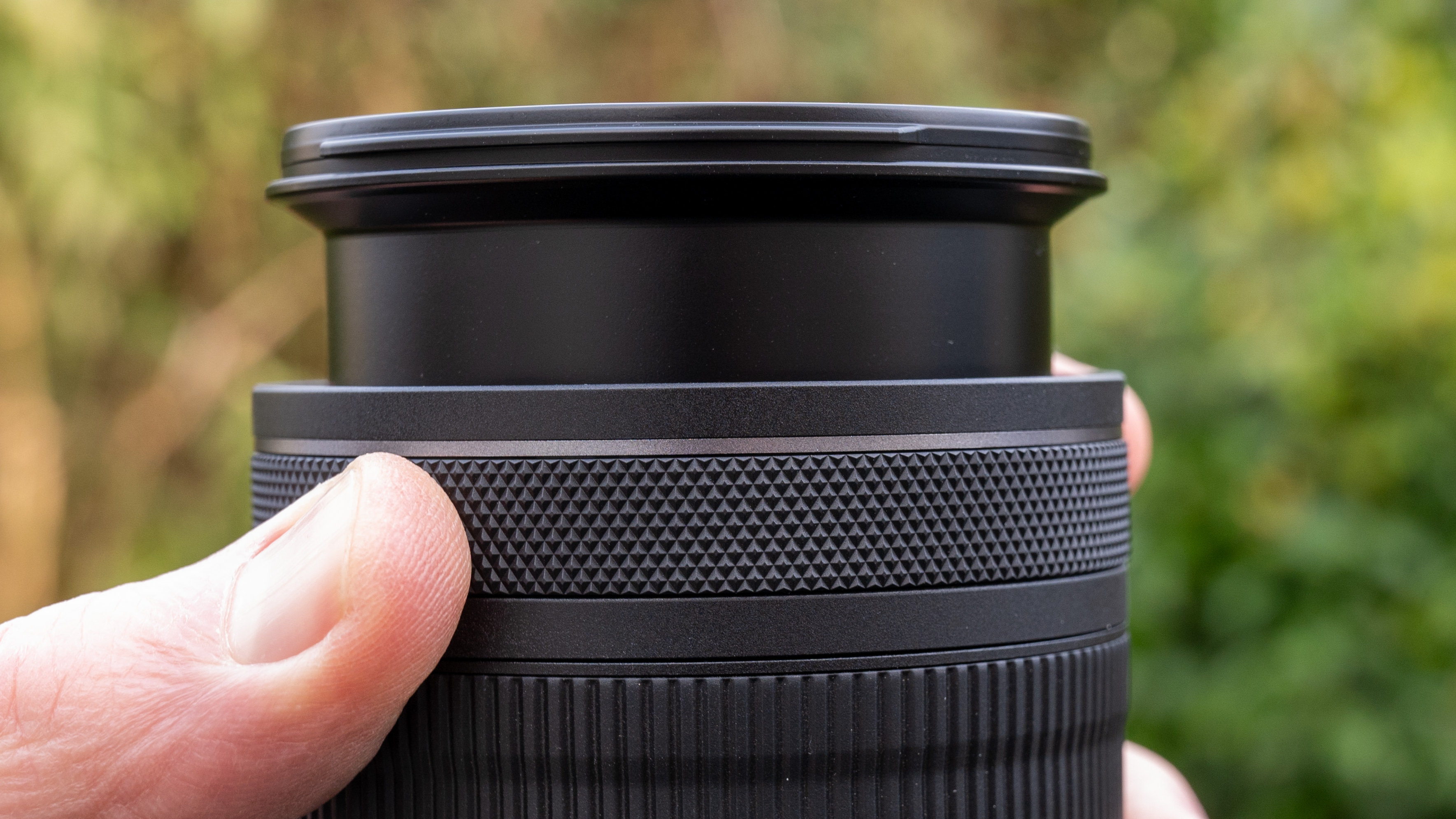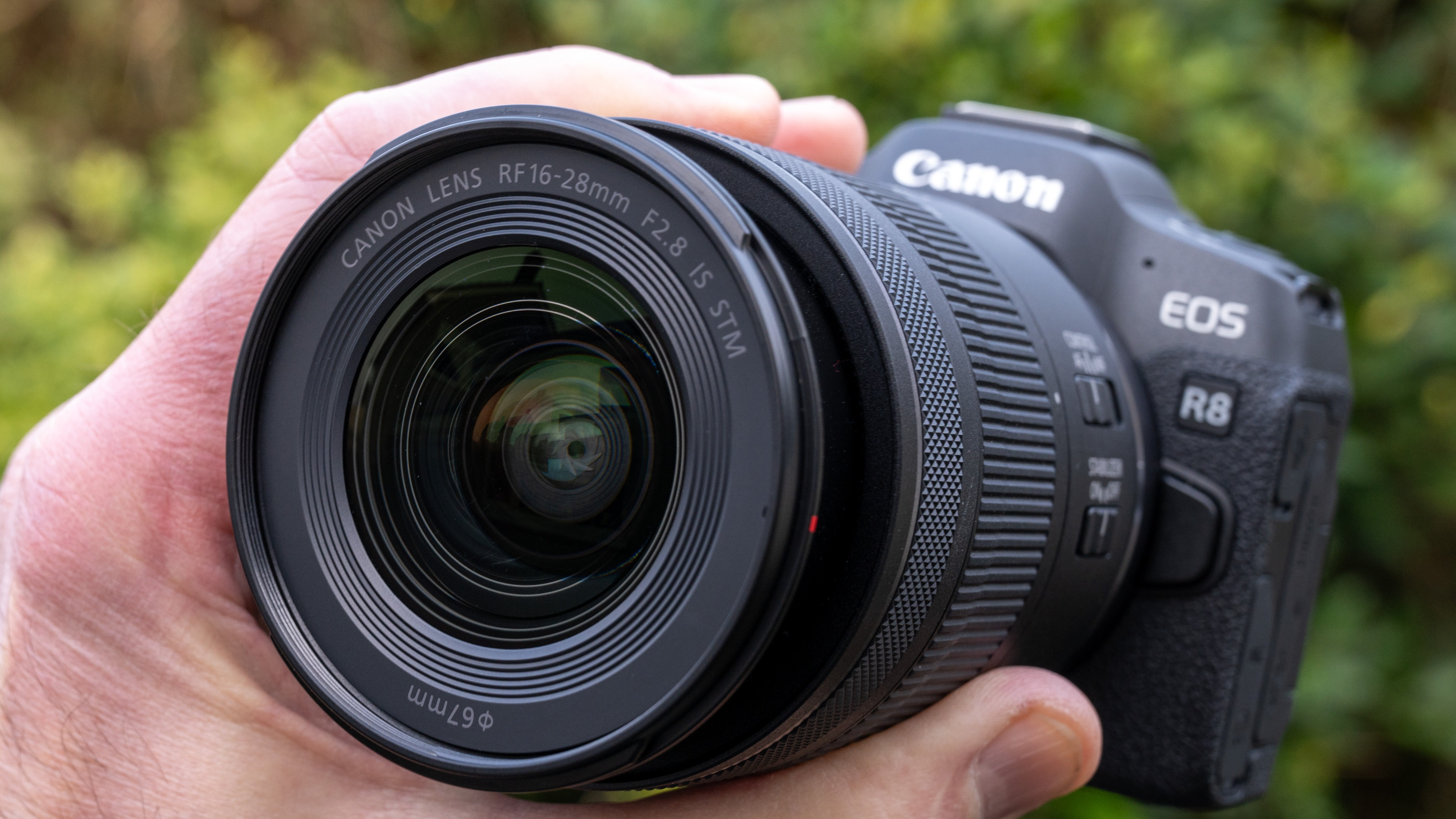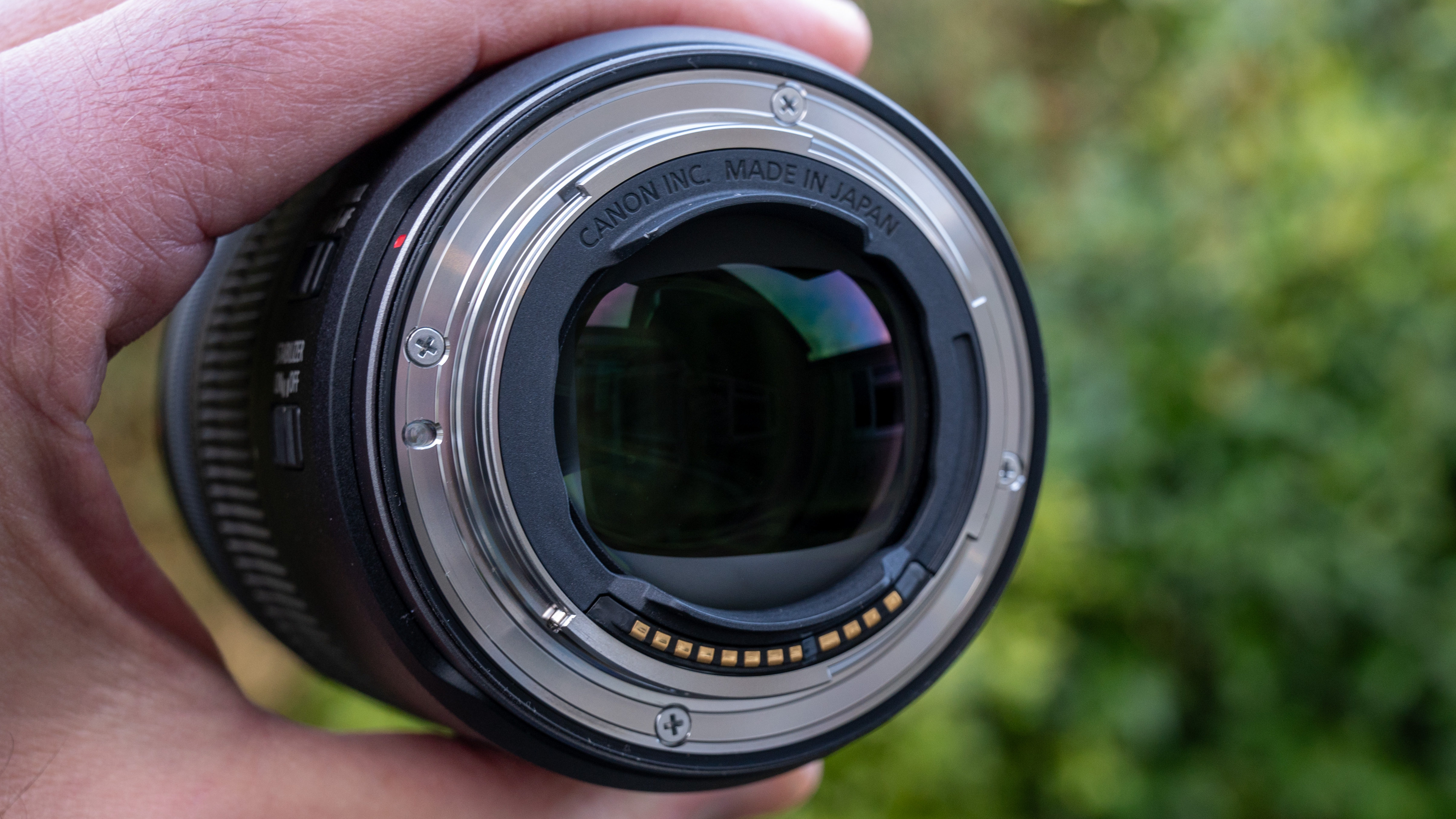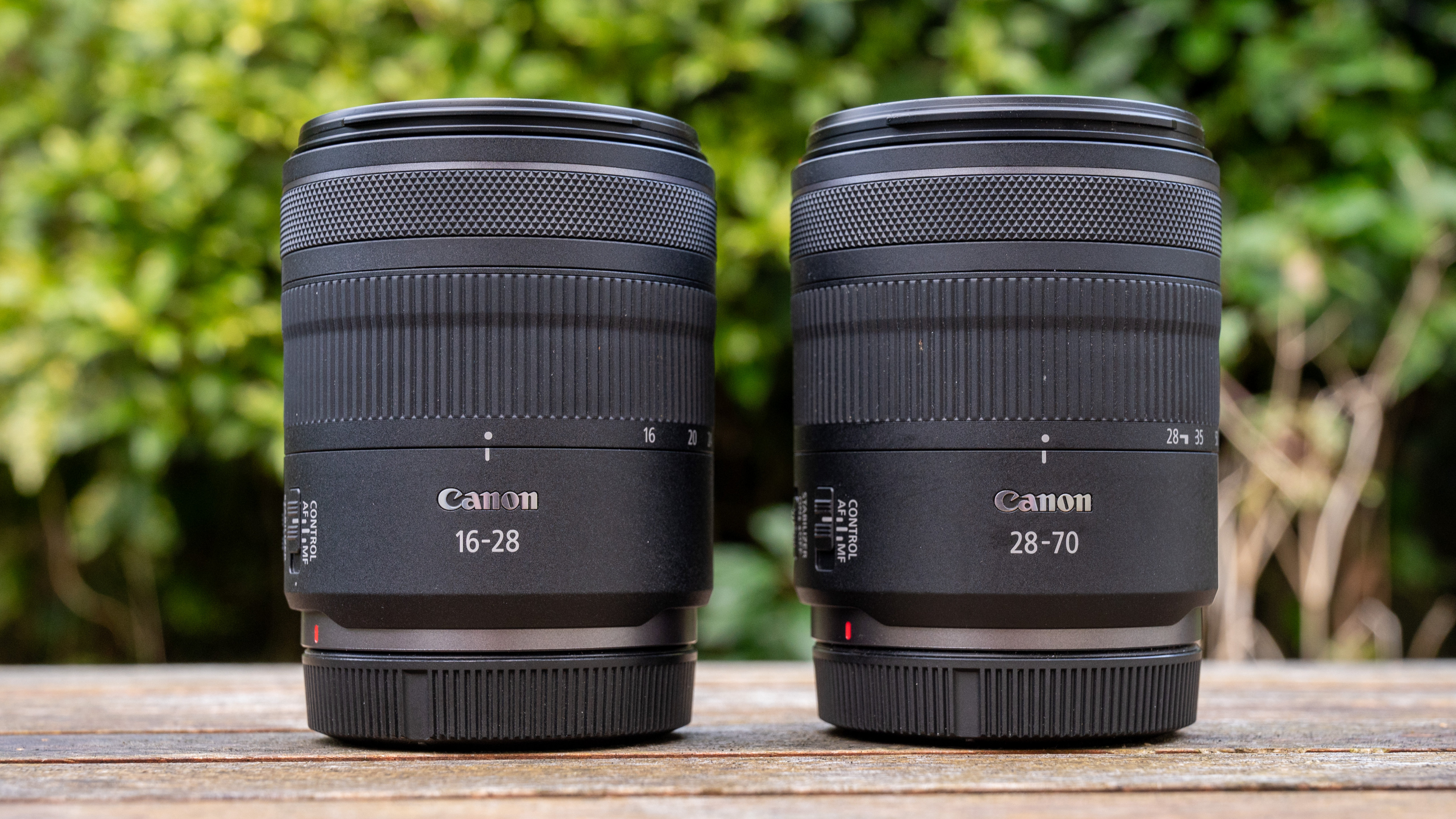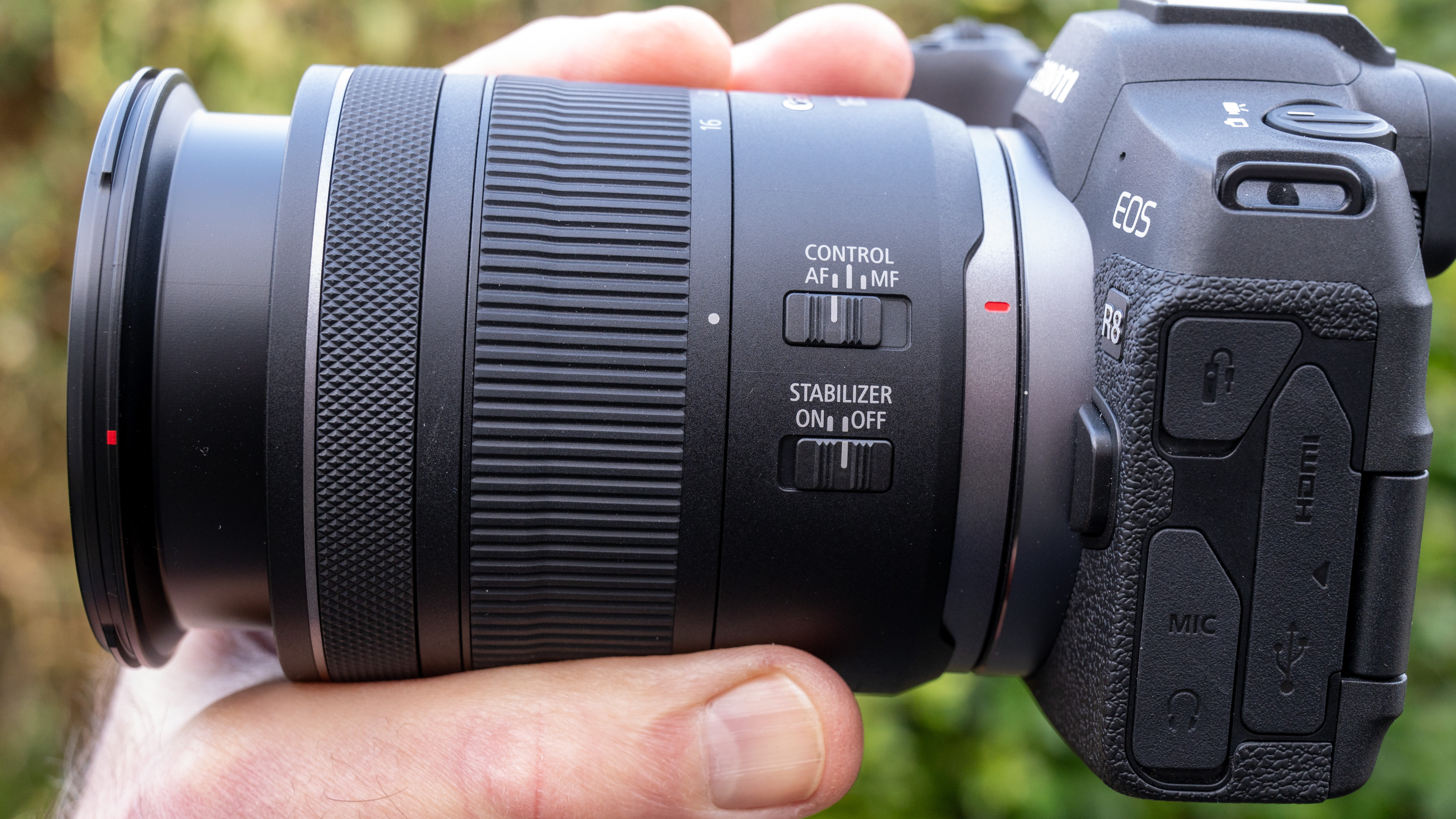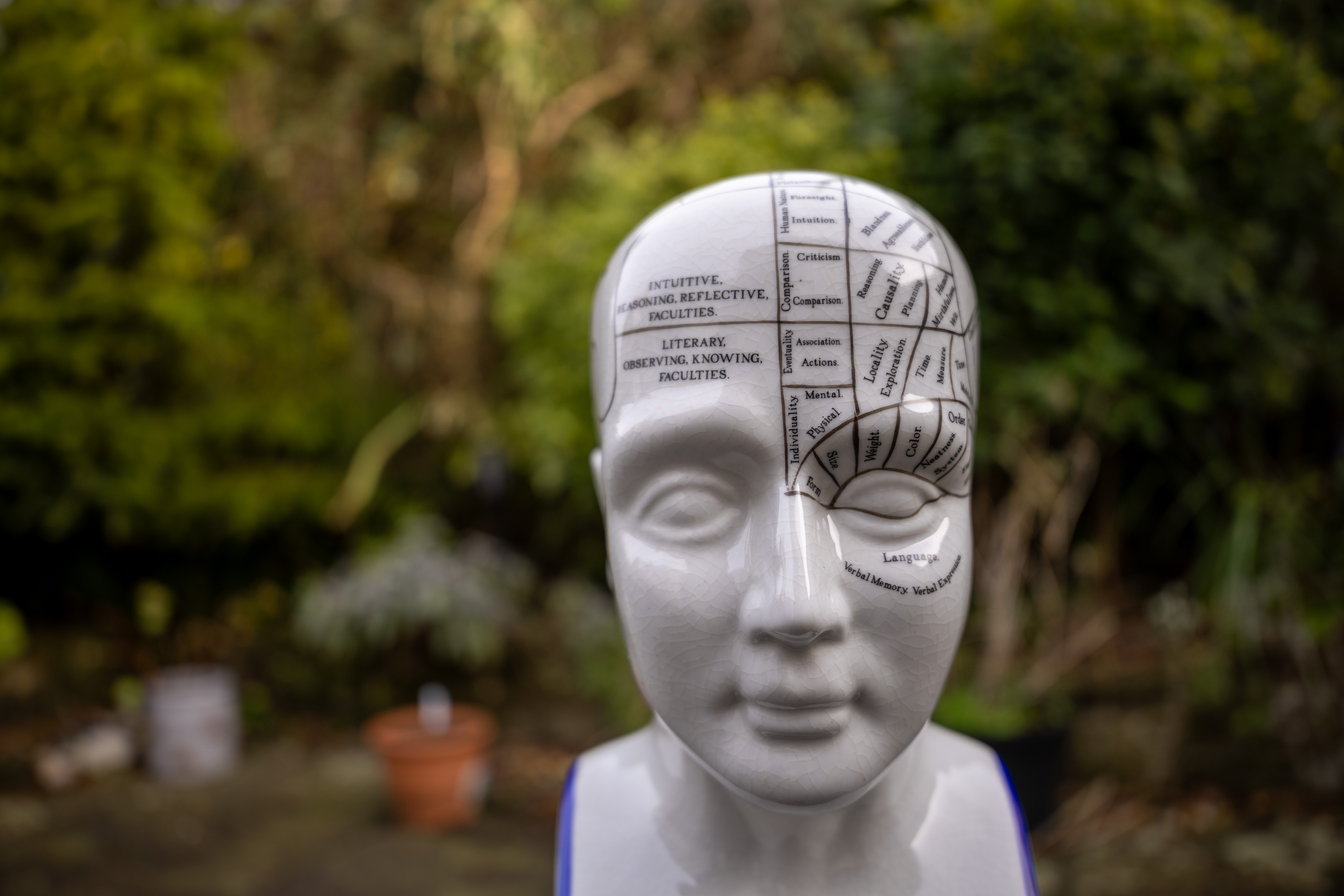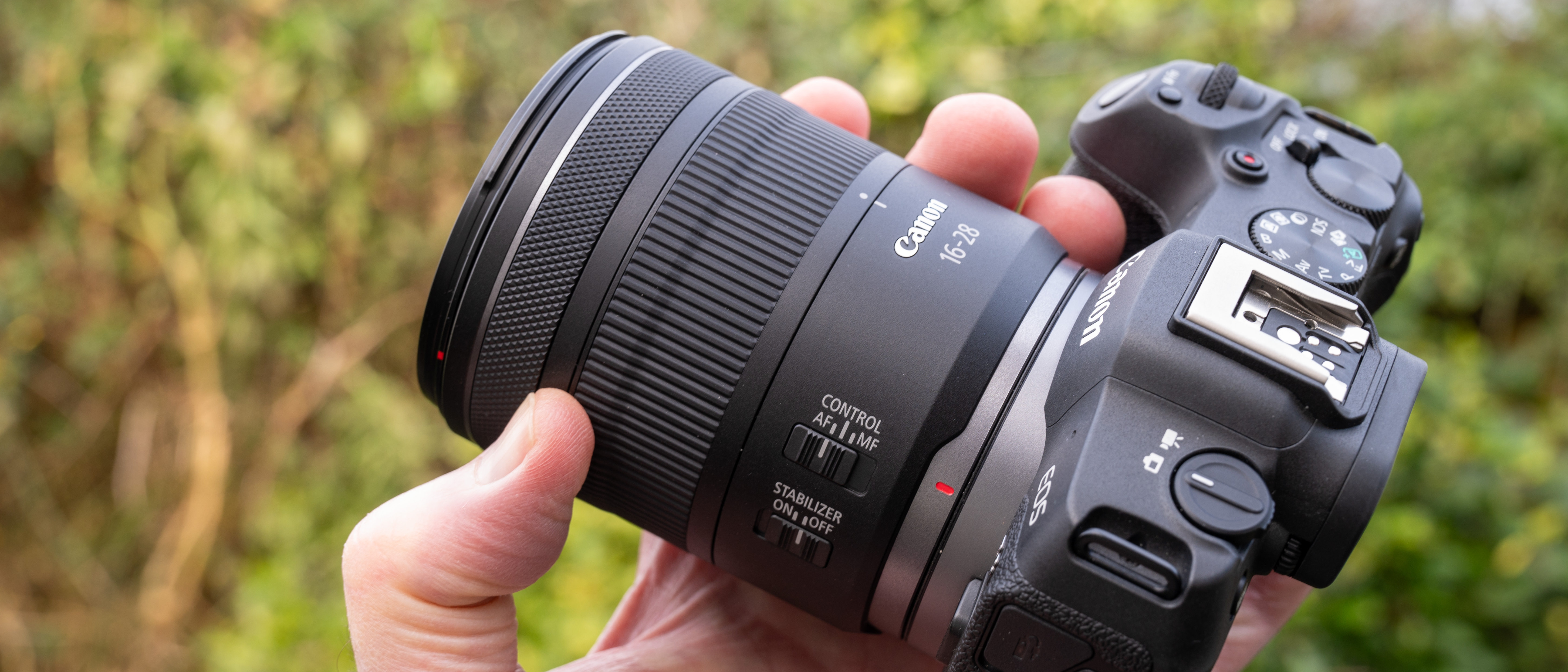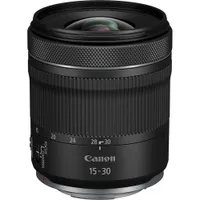Digital Camera World Verdict
I love that the Canon RF 16-28mm f/2.8 IS STM is so much more compact and lightweight than most ‘trinity’ wide-angle zooms. For me, that makes it ideal for travel and landscape photography, where there’s a lot of legwork to be done. I also like that it’s relatively affordable and, unlike most non-L-series Canon lenses, features weather-seals, although the hood is still sold separately as an ‘optional’ extra.
Pros
- +
Compact and lightweight
- +
Constant f/2.8 aperture
- +
Optical image stabilization
- +
Weather-resistant build
Cons
- -
Hood sold separately
- -
No third control ring
- -
Reliance on in-camera corrections
- -
Minimum focus distance changes with zoom
Why you can trust Digital Camera World
You certainly can’t accuse Canon of having a meagre line-up of wide-angle zoom lenses for its EOS R system mirrorless cameras. With the advent of this RF 16-28mm, there are no less than five full-frame options plus an RF-S wide-angle zoom for APS-C format cameras, and that’s not counting all of the back-catalog EF mount zooms that you can use via an EF-EOS R mount adapter.
Like the similarly new RF 28-70mm f/2.8 IS STM standard zoom, the wide-angle RF 16-28mm follows a recent theme of downsized, lightweight alternatives to ‘trinity’ zooms, delivering much more manageable and affordable options compared with top-flight constant f/2.8 aperture zoom lenses. Taking other camera systems into account, it follows in the footsteps of the Nikon Z 17-28mm f/2.8 which itself is a very close copy of the Tamron 17-28mm f/2.8 Di III RXD for Sony cameras. In short, it aims to be a top buy as one of the best lenses for Canon EOS R system cameras.
Canon RF 16-28mm f/2.8 IS STM: Specifications
| Mount options | Canon RF |
| Lens construction | 16 elements in 13 groups |
| Angle of view | 108.2 to 75 degrees |
| Diaphragm blades | 9 |
| Minimum aperture | f/22 |
| Minimum focus distance | 0.2m |
| Maximum magnification | 0.26x |
| Filter size | 67mm |
| Dimensions | 77 x 91mm / 3 x 3.6" |
| Weight | 445g / 15.7oz |
Canon RF 16-28mm f/2.8 IS STM: Price
Prices of lenses and cameras are a strange and fluctuating thing these days. At $1149 / £1249 / AU$1879, the new Canon RF 16-28mm F2.8 IS STM is similarly priced to one of my personal favorites, the L-series Canon RF 14-35mm f/4L IS USM, at least in some world regions, while being significantly less expensive in others, at $1299 / £1749 / AU$2299.
Either way, it’s a fair bit dearer than the low-budget Canon RF 15-30mm f/4.5-6.3 IS STM, which costs $449 / £669 / AU$949. Back in L-series territory, the Canon RF 15-35mm f/2.8L USM is expectedly much pricier at $2199 / £2389 / AU$3789, as is the ultra-wide-angle Canon RF 10-20mm f/4L IS STM at $2299 / £2579 / AU$4199.
All in all the new RF 16-28mm f/2.8 is competitively priced but, if you can make do with a prime rather than a zoom, don’t rule out the incredibly compact, lightweight, and inexpensive Canon RF 16mm f/2.8 STM at just $279 / £319 / AU$549.
Canon RF 16-28mm f/2.8 IS STM: Design & Handling
The first thing that grabbed my attention was just how small and lightweight the Canon RF 16-28mm f/2.8 IS STM is for a wide-angle zoom with a constant f/2.8 aperture. At just 77x91mm (3 x 3.6") and 445g (15.7oz), it’s only slightly bigger and heavier than the Canon RF 15-30mm f/4.5-6.3 IS STM, which has a variable aperture rating and is all of 2.33 f/stops slower at the long end. Both lenses have a retractable design, which tends to split opinions among photographers, but I personally like the option of compressing the lens to save space. It only takes a split second to extend the lens for use, from its retracted state, with a quick twist of the zoom ring and no fumbling around for a locking button which isn’t featured.
Speaking of rings, the lens features a zoom ring and one additional control ring. This is nominally for manual focusing but, like many budget-friendly Canon RF lenses, a switch on the barrel enables you to swap between autofocus, manual focus and ‘control’. In the last of these three, you can assign the control ring to various functions like aperture control, exposure compensation and ISO adjustment, via the host camera’s custom settings menu.
The best camera deals, reviews, product advice, and unmissable photography news, direct to your inbox!
Autofocus itself is taken care of by a leadscrew stepping motor, which is typically quick and near-silent in operation, as well as enabling smooth autofocus transitions when shooting video. Other headline attractions include optical image stabilization, with 5.5-stop effectiveness. This actually increases to a claimed 8-stop performance across most of the image frame, when pairing the lens with an EOS R system body that features IBIS. In keeping with the compact and lightweight build of the lens, I like that the provision of image stabilization means that I can usually leave my tripod at home, adding further appeal to using the lens for travel and landscape photography, where there might be some lengthy trekking involved.
Naturally, any lens is only as good as its glass. Despite the competitive price tag, this one features no less than 16 elements arranged in 13 groups. These include an up-market Glass Molded aspherical element and a further ‘replica’ aspherical element, along with a generous provision of four UD (Ultra-low Dispersion) elements. The aim is to maximize sharpness, clarity, and color accuracy while minimizing color fringing and other aberrations. Super Spectra coating is applied to reduce ghosting and flare but, as I’d expect at this price point, the lens doesn’t feature any of Canon’s more high-tech coatings.
Build quality feels pretty good, despite the lightweight construction. It’s actually one of the first lenses outside of Canon’s up-market L-series stable to feature weather-seals. These include a rubber gasket on the metal mounting plate and further weather-seal rings around joints in the barrel. However, weather-sealing isn’t as comprehensive as in most recent L-series lenses and, for example, isn’t fitted around the AF/Control/MF or Stabilizer On/Off switches. There’s also no fluorine coating on the front element to repel moisture and greasy finger marks.
One thing that the lens does inherit from other non-L-series Canon lenses is that it comes without a hood. I always feel that’s a bit cheap on Canon’s part, as I would class a hood as an essential for a wide-angle lens, rather than an ‘optional extra’. In this case, it’s a petal-shaped EW-73E hood, which will set you back an additional $40/£43.
Canon RF 16-28mm f/2.8 IS STM: Performance
Compared with prime lenses, I feel that the versatility of any zoom lens is an important factor in its overall performance. The zoom range of this lens is comparatively limited, compared with other Canon RF wide-angle zooms. Even so, it delivers a very expansive viewing angle at 16mm and the 28mm focal length at the long end neatly dovetails with the companion RF 28-70mm f/2.8 IS STM standard zoom. These two lenses are definitely an ideal pairing.
The lens lives up to its billing in terms of autofocus, which is fast and snappy for stills, while also being smooth and near-silent for video. Another bonus for video capture is minimal focus breathing. For me, performance of the optical image stabilizer turned out to be a different matter. I tested the lens with a Canon EOS R8, which lacks IBIS. The claimed 5.5-stop optical stabilization on its own should therefore enable fairly consistently sharp handheld shots at the short end of the zoom range of about 3 seconds. In my tests, stabilization was worth more like 4 stops but I’m still pretty happy with that, being able to shoot handheld with a shutter speed of a full second at 16mm.
Not just for expansive landscapes, cityscapes and architectural interiors, I love using really wide-angle lenses to exaggerate perspective, getting in close to subjects and making the background appear to shrink away. The lens obliges with a short minimum focus distance of 0.25m (0.82’) at the short end of the zoom range, reducing further to 0.2m (0.66’) at the long end. However, the shift in minimum focus distance when zooming can sometimes be a frustration.
Center-sharpness is excellent throughout most of the zoom range, even when shooting wide-open at f/2.8. It only drops off at the longest zoom setting of 28mm but remains at a very acceptable level. Edge/corner sharpness is also very good in the 16-20mm sector of the zoom range, less impressive at 24mm, and picks up again at 28mm. Edge-sharpness is generally better than in the cheaper Canon RF 15-30mm f/4.5-6.3 IS STM but worse at 24mm, whereas the 15-30mm hangs onto center-sharpness better in the longer half of the zoom range.
I found that the Canon RF 14-35mm f/4L IS USM L-series lens gives better center-sharpness at all zoom settings, and better edge-sharpness at mid-zoom settings, whereas the RF 16-28mm gives slightly better edge sharpness at both ends of the zoom range.
Color fringing is particularly well controlled, even at the extreme edges and corners of the frame, throughout the entire range of zoom and aperture settings. It fares better than the other two 15-30mm and 14-35mm lenses that I’ve just mentioned in this respect.
As I’ve come to expect from recent lenses designed for mirrorless cameras, especially wide-angle optics, there’s a heavy reliance on in-camera corrections for distortion and ‘peripheral illumination’ (vignetting). The RF 16-28mm is all but unusable at its shortest zoom setting without automatic correction for distortion, the option to switch it off being grayed-out in the camera’s menu system. Even so, with corrections for distortion, peripheral illumination and other lens aberrations enabled, image quality is very pleasing.
The f/2.8 aperture enables a reasonably shallow depth of field when shooting close-ups, blurring the background to some extent, especially towards the long end of the zoom range. It also helps to freeze any motion under dull lighting conditions, enabling relatively quick shutter speeds without the need to push your camera’s ISO to overly high settings.
Canon RF 16-28mm f/2.8 IS STM: Sample Images
The following gallery of sample images was shot in the English city of Wells, in Wells Cathedral and at the adjacent Bishop’s Palace Garden. There’s a mix of low-lit interior shots and sunny-day exteriors, captured at various zoom settings and apertures.






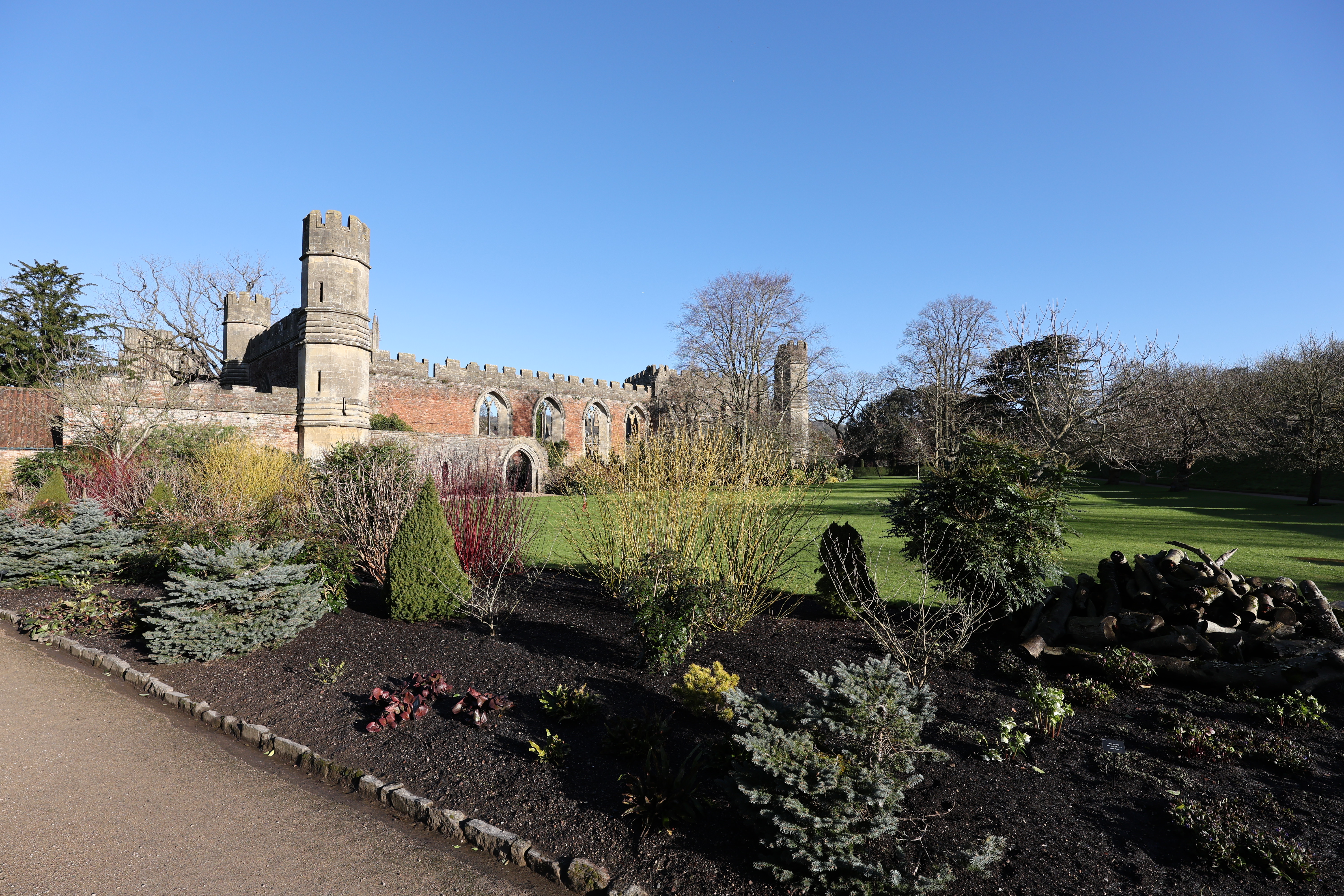
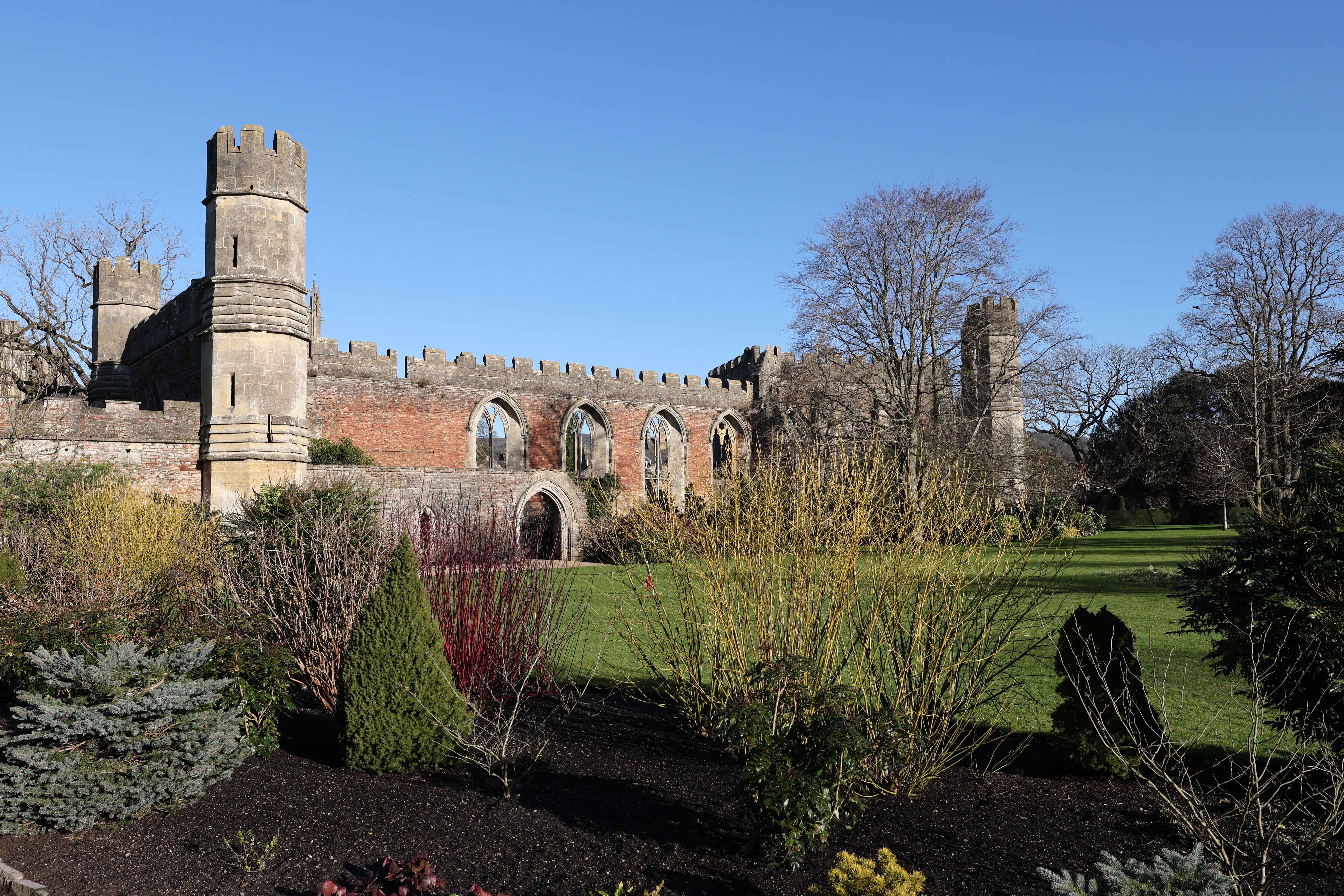
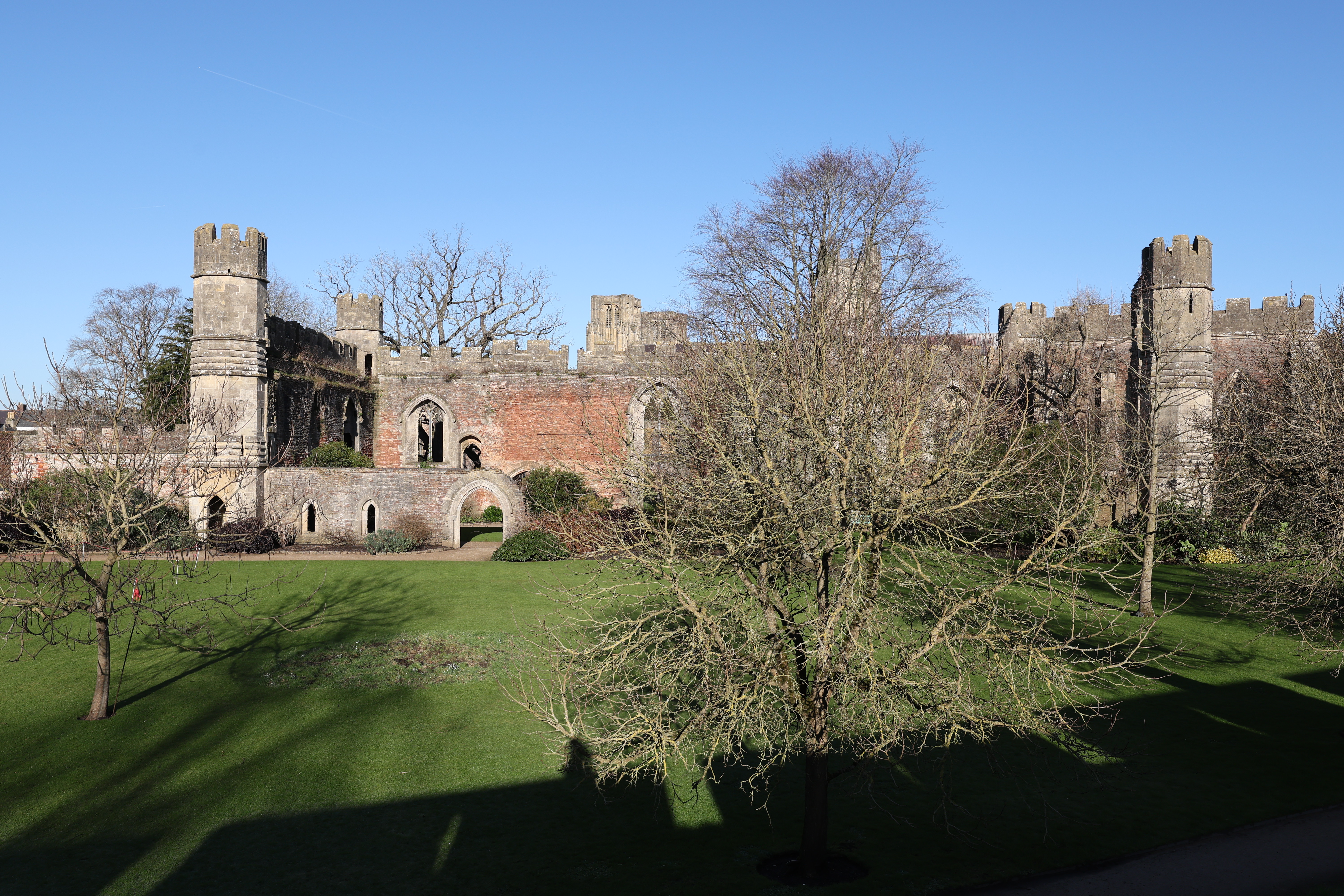


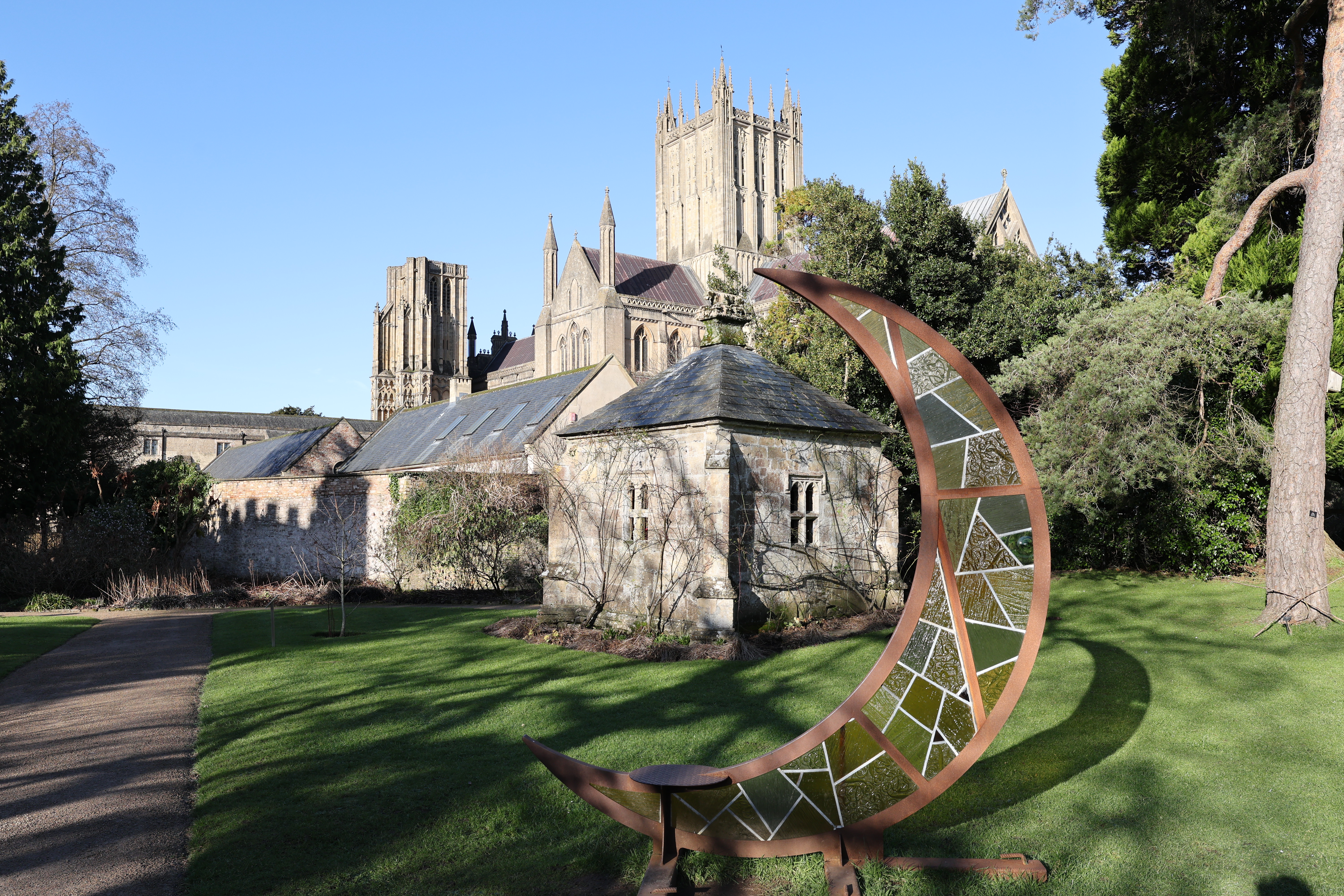


Canon RF 16-28mm f/2.8 IS STM: Lab Results
We run a range of lab tests under controlled conditions, using the Imatest Master testing suite. Photos of test charts are taken across the range of apertures and zooms (where available), and then analyzed for sharpness, distortion, and chromatic aberrations.
We use Imatest SFR (spatial frequency response) charts and analysis software to plot lens resolution at the center of the image frame, corners, and mid-point distances, across the range of aperture settings and, with zoom lenses, at four different focal lengths. The tests also measure distortion and color fringing (chromatic aberration).
Sharpness:
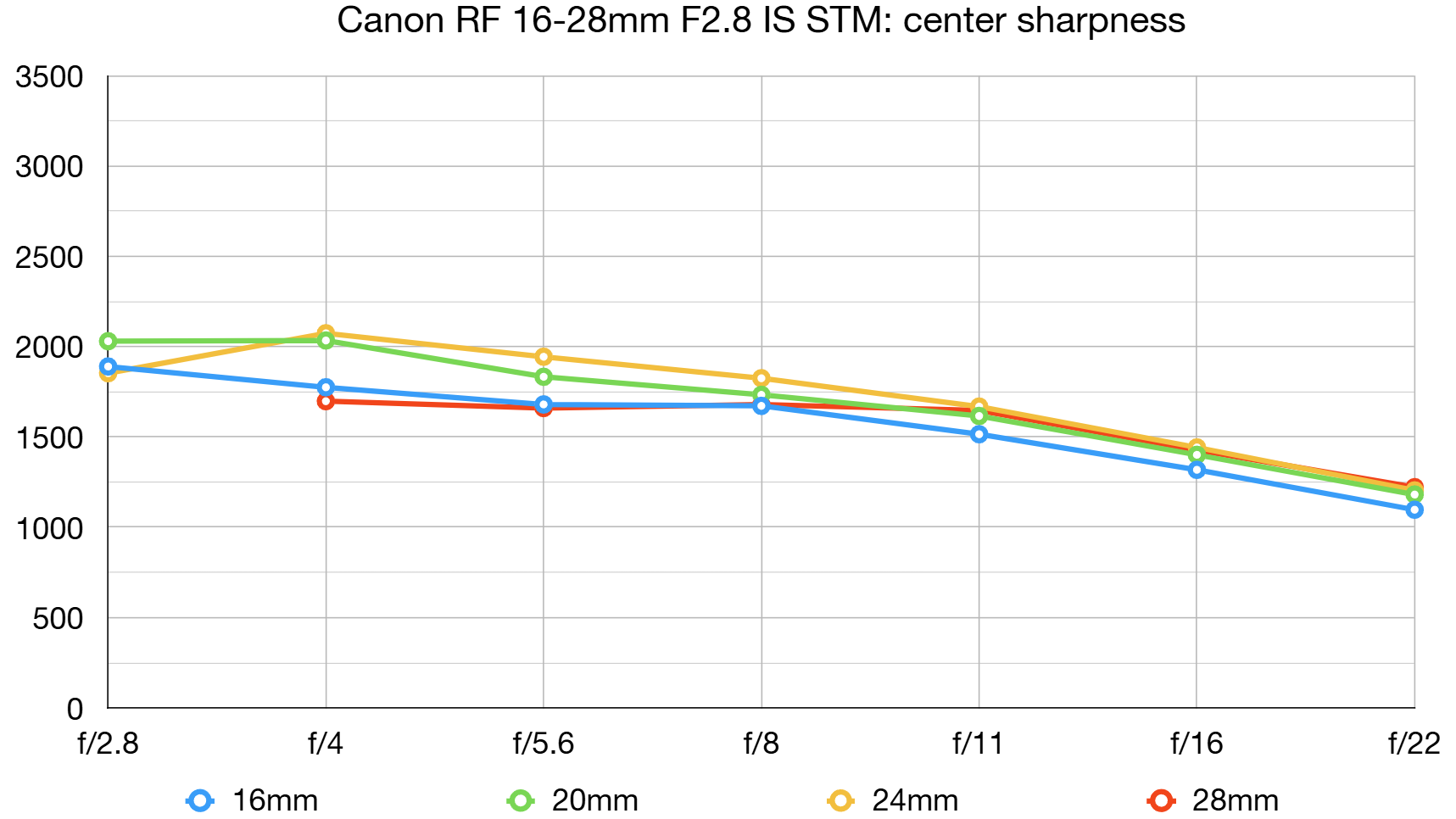
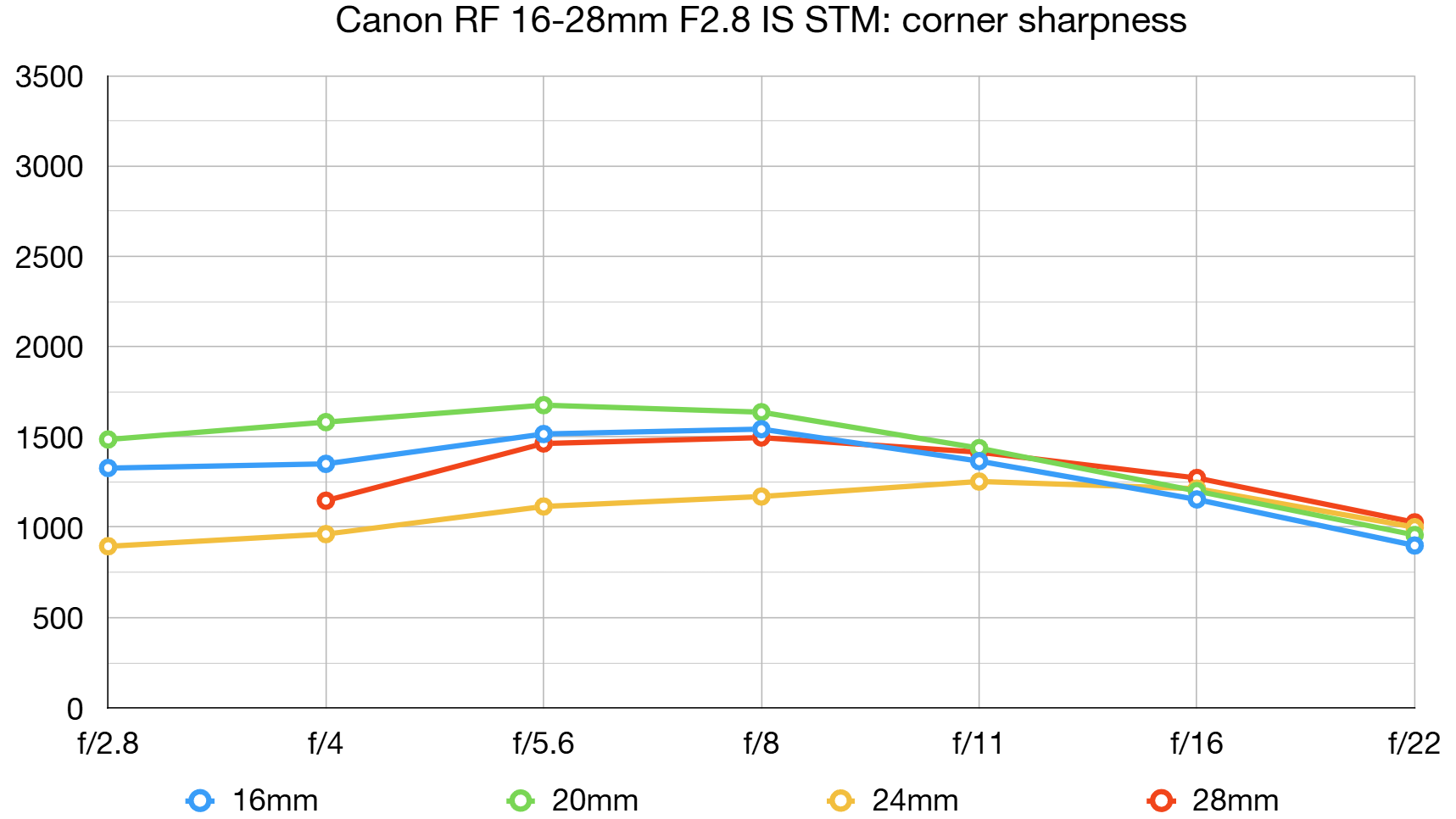
Center-sharpness starts off very well at the shortest zoom setting of 16mm, even wide-open at f/2.8. It’s even better at 20mm and still very good at 24mm, only dropping off at the long end of the zoom range. Edge/corner-sharpness is very good at most zoom settings but drops off noticeably around the 24mm mark.
Fringing:
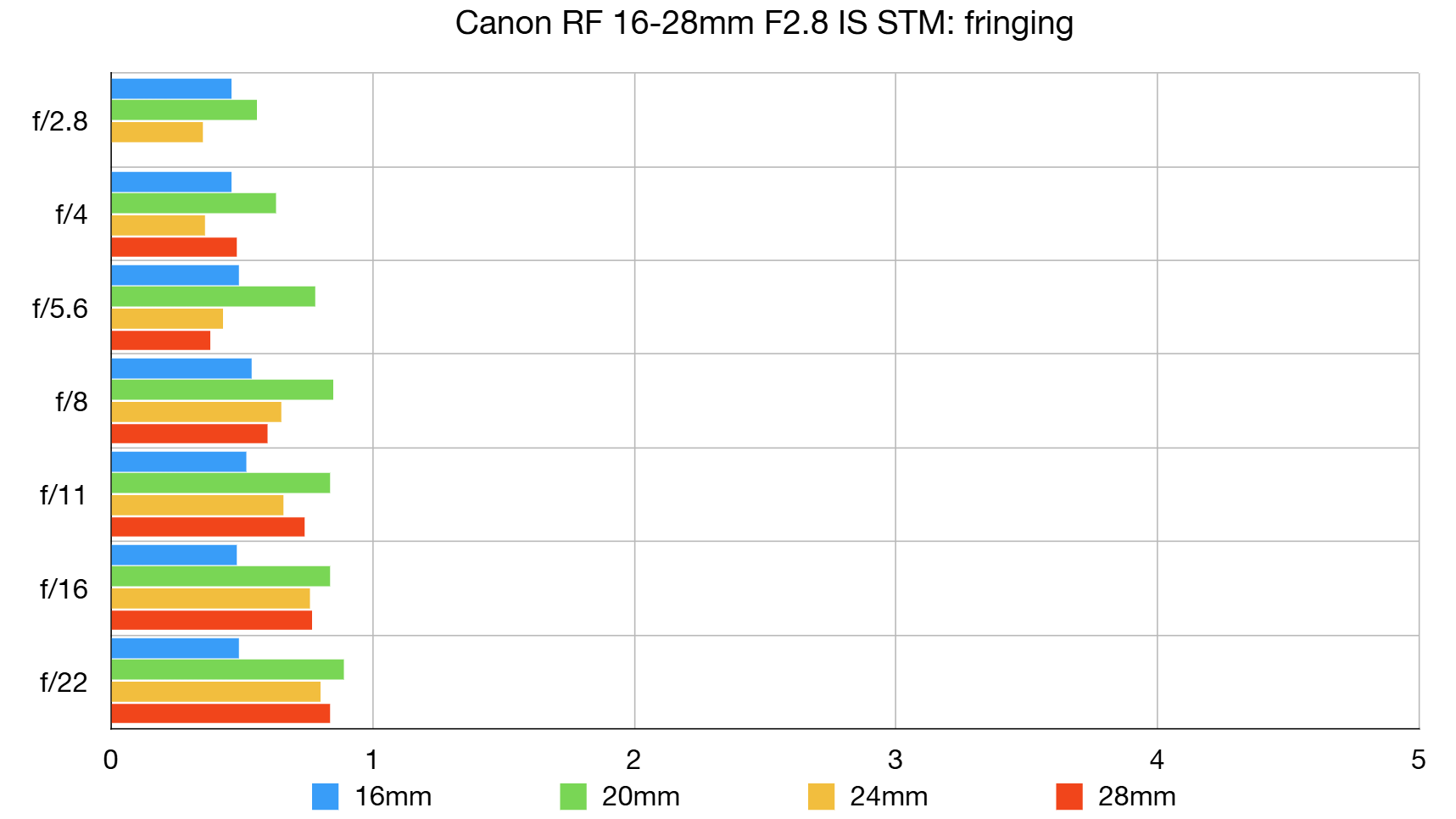
The lens turned in some of the best scores we’ve recorded for any Canon RF wide-angle zoom, for control over color fringing. Fringing is almost completely imperceptible, even at the edges and corners of the image frame.
Distortion:
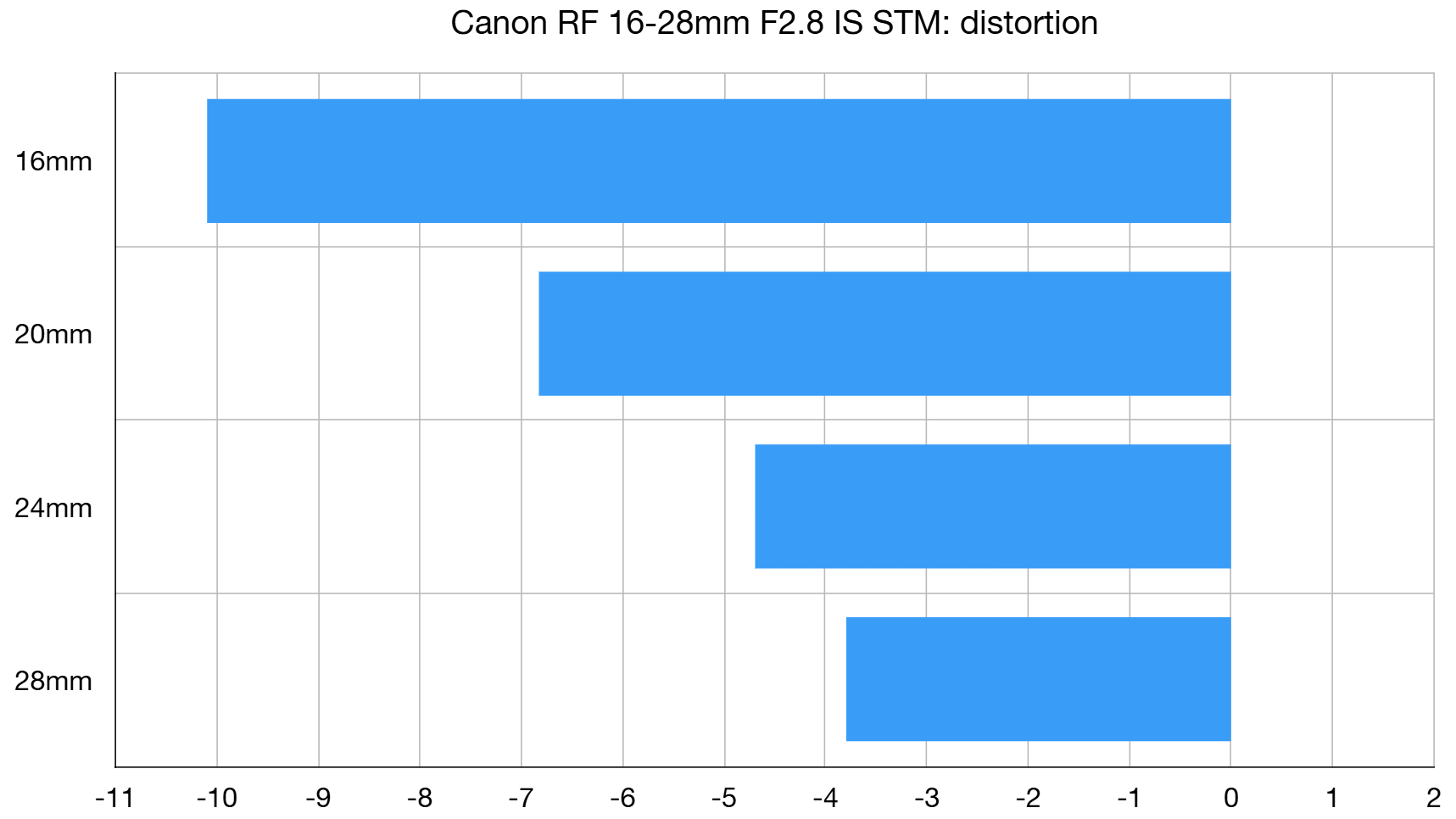
Barrel distortion is absolutely dire at 16mm, still awful at 20mm and remains very noticeable in the 24-28mm sector of the zoom range. As with many wide-angle lenses for mirrorless cameras, made by all manufacturers and not just Canon, this one is basically unusable without in-camera correction which can’t be disabled in camera menus.
Canon RF 16-28mm f/2.8 IS STM: Verdict
I really like this lens. Its compact and lightweight build makes it easy to live with and a joy to use for travel and landscape photography, or just for everyday shooting. The relatively fast and constant f/2.8 aperture is a key selling point as far as I’m concerned, and it’s great that it comes at a reasonable price. Image quality and all-round performance in terms of autofocus and image stabilization make the lens a smart buy at the price.
| Features | The f/2.8 constant aperture combines with excellent autofocus and stabilization systems. | ★★★★★ |
| Design | The retractable design won’t be to everyone’s taste but I love it, and appreciate the weather-seals. | ★★★★★ |
| Performance | The lens simply works really well for autofocus speed and accuracy but relies heavily on in-camera corrections. | ★★★★☆ |
| Value | It’s very good value compared with most ‘trinity’ wide-angle zooms but pricier than some similar lenses. | ★★★★☆ |
Alternatives
The L-series Canon RF 14-35mm f/4L IS USM is an f/stop slower but has a bigger zoom range, beating the RF 16-28mm at both the short and long ends. It’s a top-class, pro-grade wide-angle zoom that’s great value at $1299 / £1749 / AU$2299.
The Canon RF 15-30mm f/4.5-6.3 IS STM is a more low-budget affair but still packs a generous zoom range into a compact, lightweight build. It’s rather slower than the RF 16-38mm in terms of its variable aperture rating but good value at $449 / £669 / AU$949.
Matthew Richards is a photographer and journalist who has spent years using and reviewing all manner of photo gear. He is Digital Camera World's principal lens reviewer – and has tested more primes and zooms than most people have had hot dinners!
His expertise with equipment doesn’t end there, though. He is also an encyclopedia when it comes to all manner of cameras, camera holsters and bags, flashguns, tripods and heads, printers, papers and inks, and just about anything imaging-related.
In an earlier life he was a broadcast engineer at the BBC, as well as a former editor of PC Guide.
You must confirm your public display name before commenting
Please logout and then login again, you will then be prompted to enter your display name.
